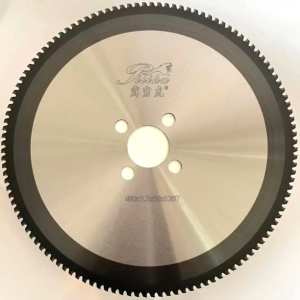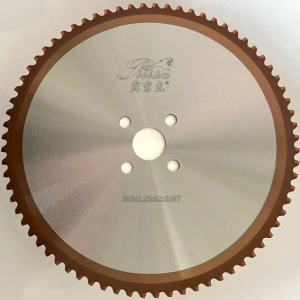When it comes to cutting tough materials with precision and efficiency, carbide saw blades are the tool of choice for professionals and DIY enthusiasts alike. With their exceptional durability and superior cutting performance, these blades have become a staple in industries ranging from woodworking to metalworking. In this article, we will explore what carbide saw blades are and their different applications.
Carbide saw blades, also known as tungsten carbide blades, are cutting tools designed for use with power saws. The key component of these blades is the carbide tip, which is made from a combination of tungsten and carbon. This material is very hard and retains its sharpness longer than other blade types, making it ideal for heavy-duty cutting tasks.
A common application for carbide saw blades is in woodworking. Whether you're cutting hardwood, softwood, or engineered wood products, these blades make it easy to make precise, clean cuts. They are designed to handle crosscut and rip cuts, allowing craftsmen to easily create intricate designs or straight cuts. Additionally, carbide saw blades are used to cut laminate, melamine, and veneer, providing a smooth finish without chipping delicate surfaces.
In the construction industry, carbide saw blades are essential for cutting a variety of materials. From framing to roofing, these blades cut through lumber, plywood and dimension boards with ease, saving time and effort. Additionally, carbide saw blades are often used for cutting masonry materials such as bricks, concrete blocks, and pavers. Their durability and heat resistance make them the perfect tool for shaping and resizing these tough materials.
Metalworking is another area where carbide saw blades excel. Able to withstand high temperatures and maintain their cutting edge, these blades are used for cutting ferrous and non-ferrous metals. Whether cutting aluminum, brass, copper or steel, carbide saw blades provide precise cuts without excessive heat build-up or burrs. This makes them suitable for applications such as metal fabrication, plumbing and automotive repair.
Carbide saw blades are not limited to professional applications but can also be used in a variety of DIY projects. Whether you are a woodworking enthusiast or an avid metalworker, having a carbide saw blade in your tool bag can greatly enhance your cutting experience. These blades come in different sizes and tooth configurations to suit different cutting tasks, ensuring you get the results you need on your project.
To extend the life of your carbide saw blade, there are some maintenance tips that must be followed. First, it is important to clean the blade after each use to remove debris or residue that may affect cutting performance. Additionally, storing your blades in a dry and protected environment helps prevent corrosion and surface damage. Finally, regularly sharpening or replacing carbide tips ensures optimal cutting performance and extends the overall life of the blade.
All in all, a carbide saw blade is a versatile tool that can be used in the woodworking, construction, and metalworking industries. Its exceptional durability and cutting performance make it a must-have tool for professionals and DIY enthusiasts alike. Whether you need to precisely cut wood, tackle heavy construction projects, or work with a variety of metals, carbide saw blades are ideal for accurate and efficient results. So, the next time you are planning a cutting project, consider using a carbide saw blade for a superior cutting experience.
Post time: Nov-14-2023


